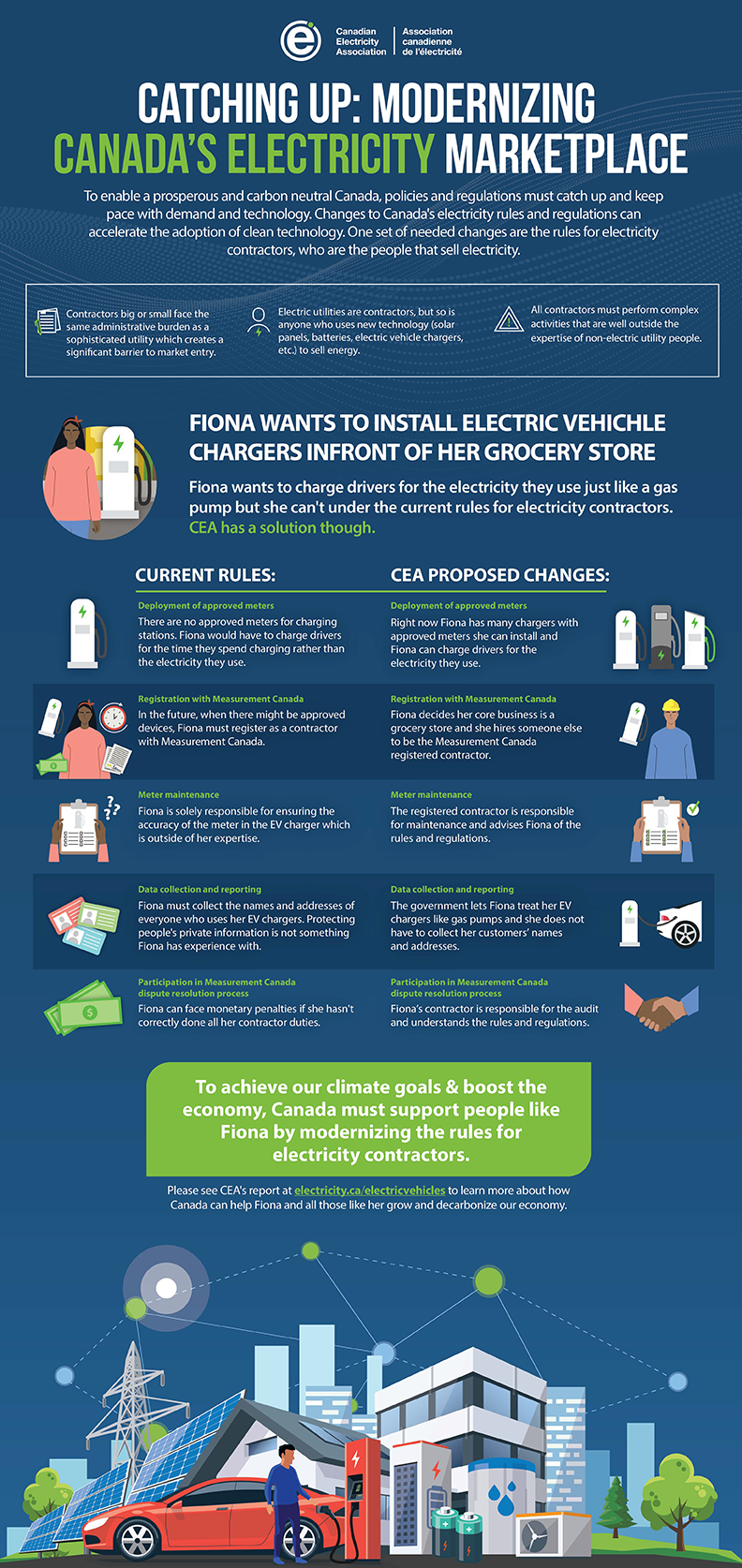Report / April 19, 2021
Catching Up: Modernizing Canada’s Electricity Marketplace Rules and Regulations to Grow & Decarbonize the Economy
Executive Summary
The Canadian Electricity Association (“CEA”) represents electricity generators, transmitters, and distributers from coast to coast to coast. Included in CEA’s membership are our corporate partners from various areas of the electricity supply chain and emerging business lines such as transactive energy companies. A crosscutting priority for all of CEA’s members and corporate partners is grappling with the rapid level of change in the sector that is driven by environmental concerns and technological advancement. These rapidly evolving consumer preferences have led to the emergence of new business models unforeseen by our old regulatory framework. Accordingly, it is crucial that regulatory frameworks evolve to enable the electricity sector to meet these new demands.
One such regulatory framework in need of modernization is the federal Electricity and Gas Inspection Act (EGIA), and specifically, the legal framework for those that sell energy; the EGIA deems them contractors. In 2018 CEA members identified this contractor framework as a major obstacle to innovation, commerce, and environmental progress and since then we have worked internally and consulted broadly with external stakeholders, including representatives from the electric vehicle charger manufacturers, homebuilders, energy storage providers, Canadian municipalities, next generation streetlight manufacturers, and others to find balanced solutions to the contractor framework challenge.
The contractor framework is an obstacle to the evolution of the electricity marketplace and Canada’s environmental goals because we are seeing the emergence of a new class of participant. It used to be true that the electricity marketplace was the sole domain of electrical utilities but now most any business can generate and sell electricity with such technology as rooftop solar panels and electric vehicle chargers. These new Casual Participants are going to be a significant part of the decarbonization and growth of Canada’s economy through their deployment of new clean technology at grid edge, so it is critical that they not be hindered from participating in the electricity marketplace by onerous government regulations, liabilities, and other policies. But that is exactly what the EGIA does.
Thus, CEA working with our external stakeholders have identified 20 targeted recommendations for updating the EGIA to enable new forms of electricity commerce, while maintaining the important consumer protections and legal traceability that the EGIA was originally intended to protect. We present these recommendations to you in the following report and thank you for considering our rationale and conclusions. Our sector believes that these recommendations, if enacted, will be in the best interests of the public we all serve.
Acknowledgements
CEA acknowledges the important contributions of others in the preparation of these recommendations. First, we recognize the efforts of the lead author and researcher Bram Abramson of 32M and CEA staff Alex Kent who was the project manager. We also recognize the work of the CEA Metering Technology and Policy Committee, led by Rob Henschel of Alectra Utilities and Robert Heimann of FortisAlberta, for their prioritization of this initiative by recognizing the strategic importance of the contractor framework to the whole of the electricity sector. Finally, we would like to recognize all CEA members and representatives from other sectors that contributed information to this project.
Share
Metering
Electricity metering needs to evolve with the industry it supports.
Related Resources
Report / September 22, 2021
Electric Metering in Canada: Unrealized Opportunities for Innovation, Environmental Benefits and Lower Costs to Customers
Guide / April 19, 2021
Catching Up: Modernizing Canada's Electricity Marketplace Infographic
Report / April 19, 2021
